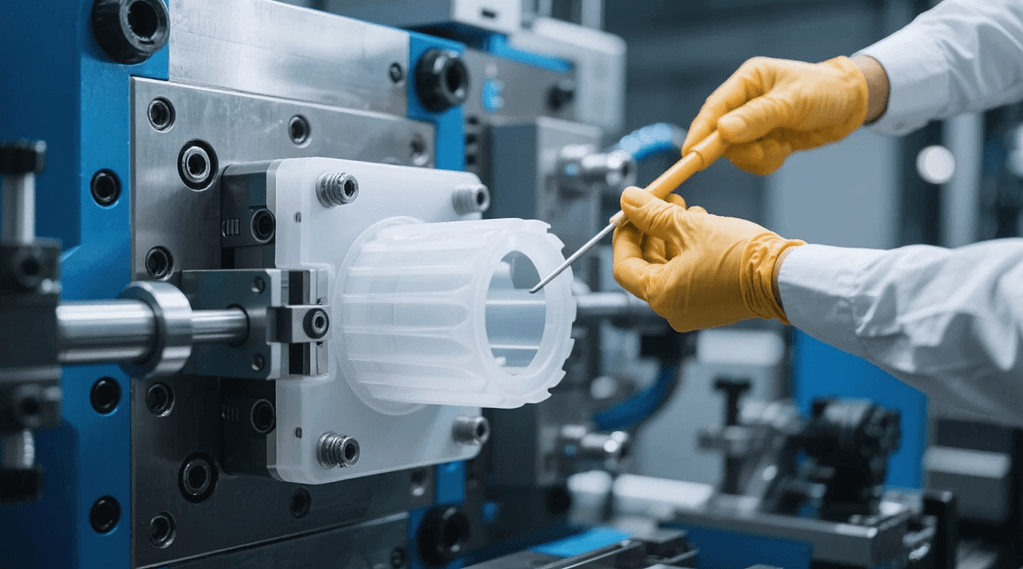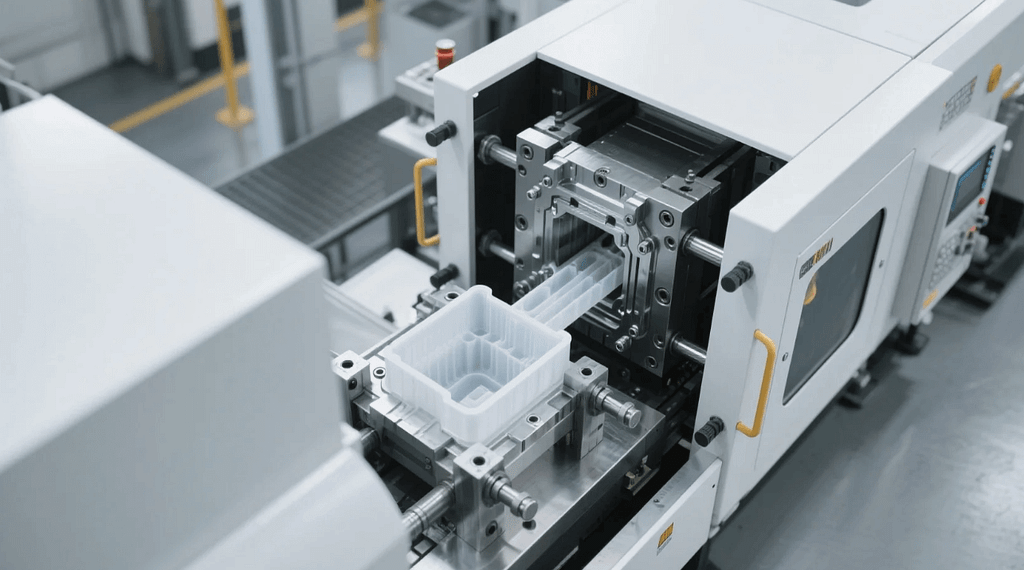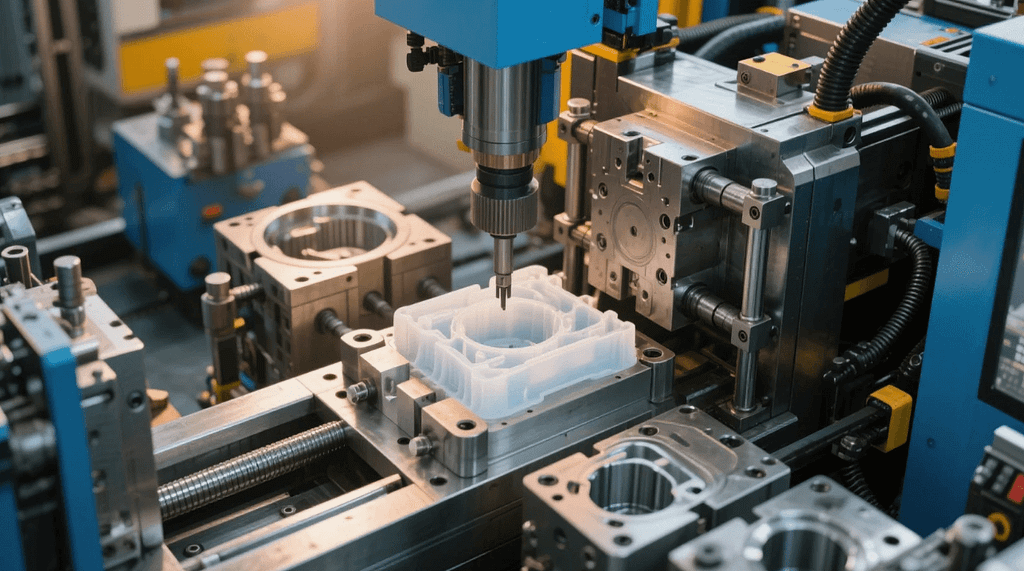In the vast landscape of modern manufacturing, plastic injection molding service stands as a pivotal process, driving the production of countless products we encounter daily. From intricate medical components to robust automotive parts and consumer electronics, plastic injection molding offers unparalleled efficiency and versatility. This comprehensive article delves into the core aspects of what a plastic injection molding service entails, highlighting its defining characteristics and profound impact, especially within the realm of precision industrial models. For businesses seeking high-quality, repeatable plastic parts for their prototypes or production runs, understanding this crucial manufacturing method is key to unlocking significant value and accelerating time to market.
What Defines a Plastic Injection Molding Service?
At its essence, a plastic injection molding service provides the expertise and machinery to produce plastic parts by injecting molten plastic material into a mold cavity. Once the plastic cools and solidifies, it forms the desired shape. This method is celebrated for its ability to produce high volumes of identical parts with remarkable accuracy and consistency. It’s a cornerstone technology for mass production, but its role in prototyping and precision industrial models is equally vital, offering a pathway from concept to tangible reality.

The Fundamental Process Explained
The journey of a plastic part through injection molding involves several key steps, each contributing to the final product’s quality:
Design and Tooling Creation
The process begins with the design of the part, often using CAD software. Crucially, a mold, also known as tooling, is then precision-engineered. This mold is typically made from steel or aluminum and features cavities that are the inverse of the desired part. The quality and precision of this tooling are paramount, directly influencing the accuracy and consistency of every part produced. For precision industrial models, the tooling must accurately reflect even the most minute design details to ensure high fidelity.
Material Selection
A wide array of thermoplastic and thermosetting polymers are available, each offering distinct properties such as strength, flexibility, heat resistance, and chemical resistance. A reliable plastic injection molding service guides clients in selecting the optimal material based on the part’s intended function, environmental exposure, and performance requirements. This choice significantly impacts the final model’s characteristics.
The Injection Cycle
Once the mold is ready and the material chosen, the injection molding machine takes over. Plastic pellets are fed into a heated barrel, where they melt. A screw then forces this molten plastic under high pressure into the mold cavity. After the plastic cools and solidifies, the mold opens, and the finished part is ejected. This cycle repeats rapidly, making it incredibly efficient for high-volume production.
Quality Control and Finishing
Throughout the process, stringent quality control measures ensure parts meet precise specifications. This includes checking dimensions, surface finish, and material integrity. Post-molding operations, such as trimming, assembly, or specialized finishing, may also be performed to deliver the final product.
Key Advantages of a Plastic Injection Molding Service
For businesses requiring plastic components, partnering with a professional plastic injection molding service offers numerous compelling benefits that streamline production and enhance product quality.

High Repeatability and Consistency
One of the most significant advantages of plastic injection molding is its unparalleled ability to produce millions of identical parts with extremely tight tolerances. Once the mold is perfected, each subsequent part will mirror its predecessor in form, fit, and function. This consistency is critical for maintaining quality standards, especially for complex assemblies or components used in sensitive applications. For precision industrial models, this means every prototype, even across multiple iterations, remains consistent with the design intent.
Cost-Effectiveness for High Volume
While the initial investment in tooling can be substantial, the per-part cost in high-volume production drops dramatically. The rapid cycle times and automated nature of the process make it incredibly efficient for mass manufacturing, leading to significant cost savings in the long run. This makes plastic injection molding service an economical choice for scaling up production after successful prototyping.
Design Flexibility and Complex Geometries
Modern plastic injection molding techniques, supported by advanced mold-making capabilities, allow for the creation of incredibly complex geometries, intricate features, and thin-walled sections. This design freedom empowers engineers to consolidate multiple parts into a single molded component, reducing assembly costs and improving overall product integrity. For industrial models, this means designers can faithfully translate highly detailed and complex CAD designs into physical objects.
Wide Material Selection
The vast array of available plastic resins provides immense flexibility in material properties. Manufacturers can choose materials with specific characteristics such as impact resistance, chemical resistance, UV stability, biocompatibility, or aesthetic appeal. This versatility ensures that the produced parts, whether for prototypes or final products, possess the precise attributes required for their application.
Excellent Surface Finish and Aesthetic Appeal
Plastic injection molding typically yields parts with very smooth and aesthetically pleasing surface finishes directly out of the mold. This often reduces or eliminates the need for secondary finishing operations, saving time and cost. For industrial models, a high-quality surface finish enhances visual appeal for presentations, marketing, or ergonomic evaluations.
Plastic Injection Molding Service in Precision Industrial Models
While often associated with mass production, a plastic injection molding service plays a surprisingly critical role in the development and refinement of precision industrial models.
Prototyping for Production Readiness
Before committing to expensive production tooling, companies frequently create prototypes to test designs, validate functionality, and gather user feedback. A plastic injection molding service offers a unique advantage here: it allows for the creation of prototypes using the actual injection molding process and production-grade materials, even if using temporary or aluminum tooling. This provides a more accurate representation of the final product than models made with other prototyping methods like 3D printing. These “bridge tooling” or “soft tooling” approaches help bridge the gap between initial concept and full-scale manufacturing, ensuring production readiness.
Form, Fit, and Function Validation
For complex products, understanding how different plastic components interact is crucial. A plastic injection molding service allows for the production of models that accurately reflect the final product’s dimensions and material behavior. Engineers can use these models to conduct precise fit checks, ensure proper assembly, and test the functional performance of moving parts or intricate mechanisms. This is indispensable for validating design choices before mass production, preventing costly reworks.
User Experience and Ergonomics Testing
The tactile feel, weight, and ergonomic comfort of a plastic product are vital for user satisfaction. Precision industrial models created via injection molding can be used for hands-on evaluation by potential users or focus groups. This feedback helps refine the design for optimal user experience, ensuring the product is not only functional but also intuitive and comfortable to use. A service capable of producing high-fidelity models facilitates truly meaningful user testing.
Design for Manufacturability (DFM) Analysis
Engaging a plastic injection molding service early in the design process enables crucial Design for Manufacturability (DFM) analysis. Experts can review designs to identify potential molding challenges such as sink marks, warp, or uneven wall thickness, suggesting modifications to optimize the part for efficient and high-quality production. This proactive approach saves significant time and money by preventing issues before they arise in expensive production tooling.
Choosing the Right Plastic Injection Molding Service Partner
Selecting the right plastic injection molding service is paramount for the success of any project involving plastic parts, especially for precision industrial models. Consider several factors when making this critical decision.
Expertise and Experience
Look for a service provider with extensive experience in your specific industry or with similar part complexities. Their technical expertise in mold design, material science, and process optimization will be invaluable.
Advanced Equipment and Technology
Ensure the service utilizes modern injection molding machines, advanced robotics for automation, and sophisticated quality control systems. State-of-the-art equipment translates directly into higher precision and efficiency.
Quality Assurance and Certifications
A reputable plastic injection molding service will have robust quality management systems in place, often backed by certifications like ISO 9001 or industry-specific standards. This commitment to quality ensures reliable and consistent results.
Communication and Collaboration
A good partner offers clear communication channels and collaborates closely with your design team throughout the project. Their willingness to provide DFM feedback and support during the prototyping phase is a strong indicator of a valuable partnership.
The Future of Plastic Injection Molding Service
The landscape of plastic injection molding service is continuously evolving, driven by advancements in automation, materials science, and digital integration. We’re seeing increasing adoption of smart manufacturing technologies, including IoT sensors for real-time process monitoring and AI-driven optimization of molding parameters. New biodegradable and recycled plastic materials are also expanding the environmental sustainability of the process. For precision industrial models, these innovations will lead to even faster prototyping, enhanced material performance, and the ability to produce increasingly complex and functional models that closely mimic end-use products. The commitment to responsible and efficient manufacturing will undoubtedly remain at the forefront of these advancements.
Conclusión
A plastic injection molding service is far more than just a manufacturing vendor; it’s a strategic partner for businesses seeking to bring innovative plastic products to life. Its remarkable capabilities in high-volume production, combined with its crucial role in precision industrial modeling, make it an indispensable technology. By offering unparalleled repeatability, design flexibility, and cost-effectiveness, it enables the efficient transformation of ideas into tangible, high-quality plastic components. For companies focused on creating accurate prototypes and refining their designs, leveraging a top-tier plastic injection molding service is a clear path to innovation, accelerating development cycles and ensuring market success.
PREGUNTAS FRECUENTES
Q1: What is the main advantage of using a plastic injection molding service for industrial models instead of 3D printing?
A1: While 3D printing is great for early-stage prototypes, a plastic injection molding service allows you to create models using the actual production process and materials, offering a more accurate representation of the final product’s form, fit, and function for advanced testing and validation.
Q2: Is plastic injection molding suitable for low-volume production or only mass production?
A2: While highly cost-effective for mass production, plastic injection molding service can also be suitable for low-volume runs, especially when using “bridge tooling” or “soft tooling” (often aluminum molds) for prototyping and initial production before committing to high-volume steel molds.
Q3: What types of plastics are commonly used in injection molding?
A3: A wide variety, including ABS, polycarbonate, polypropylene, polyethylene, nylon, acrylic, and specialized engineering plastics like PEEK or Ultem. The choice depends on the part’s mechanical, thermal, and chemical requirements.
Q4: How important is mold design in plastic injection molding?
Q4: Mold design is absolutely critical. The precision and quality of the mold directly determine the accuracy, consistency, and overall quality of the injected parts. Proper mold design prevents common defects like warping, sink marks, and short shots.
Q5: Can a plastic injection molding service help with product design?
Q5: Yes, reputable services often offer Design for Manufacturability (DFM) analysis. Their experts can review your part design and suggest modifications to optimize it for the injection molding process, helping to prevent issues and reduce costs down the line.
Q6: What factors influence the cost of a plastic injection molding service?
Q6: Key factors include mold complexity and material (steel vs. aluminum), part size and complexity, material chosen, production volume, and any post-molding operations (e.g., assembly, finishing).
Q7: What is the typical lead time for getting plastic injection molded parts?
Q7: Lead times vary significantly. Mold creation can take several weeks to months depending on complexity. Once the mold is complete, part production cycles can be very fast, often measured in seconds per part, allowing for quick turnaround on orders.
